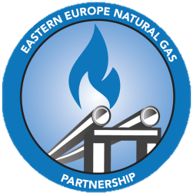Promoting Regional Cooperation in Natural Gas Network Planning in Eastern Europe 
The Eastern Europe Natural Gas Development Partnership (EE-NGP) was established by the United States Agency for International Development (USAID), the United States Energy Association (USEA), and Ministries and Natural Gas Transmission System Operators (TSOs) of Eastern Europe.
The EE-NGP was intended to supplement system development activities and ongoing Energy Community processes and provide a forum for the gas transmission network system operators in the region to develop national and common regional gas network development models, perform technical analyses to optimize gas network infrastructure development, and discuss topics of common interest. The long-term objective of the Partnership was to enable the creation of a regional gas market with the potential for US gas supplies. The EE-NGP project concluded in 2022.
GOALS AND OBJECTIVES
The EE-NGP supported the following objectives:
- Promote regional cooperation in natural gas network planning among Ministries and TSOs in Eastern Europe;
- Improve the capacity of the Ministries and TSOs to develop mathematical forecasting simulation models of internal natural gas networks; interconnections and storage facilities
- Support regional harmonization of natural gas transmission planning methodologies and operational principles;
- Conduct analysis to identify potential natural gas transmission investment projects to expand natural gas markets while ensuring security and reliability of the regional power system;
- Promote the results of analyses to a wide audience of policy, regulatory, and industry officials, and in doing so;
- Accelerate development of natural gas pipeline infrastructure in Eastern Europe.
The project consisted of the following tasks:
- Exchanges of information on policy, regulatory, market, commercial and environmental factors effecting the development of natural gas pipeline infrastructure in Eastern Europe;
- Exchanges of best practices on natural gas transmission planning with counterparts in North America and the Europe;
- Conducting training on the use and application of natural gas transmission planning modeling software;
- Developing harmonized national and regional natural gas pipeline models with suitable detail for regional network analysis;
- Conducting national and regional analyses necessary to accelerate the development of natural gas pipeline infrastructure in Eastern Europe;
- Identifying natural gas pipeline infrastructure projects of regional significance;
- Organizing workshops to disseminate the analytical results of Working Group analyses to policy, regulatory and commercial audiences.
Related Media
Related Publications
-
July 2021 - Program Publications
-
June 2021 - Program Publications
-
June 2021 - Program Publications





